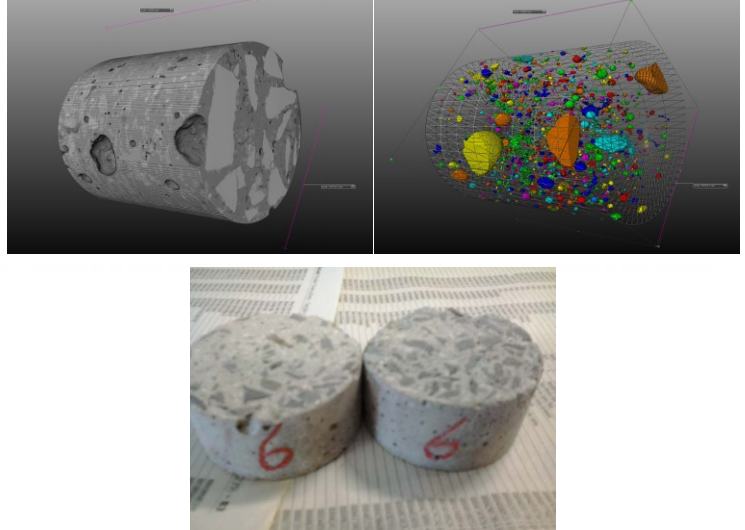Air-entrained Concrete: Relationship between Thermal Conductivity and Pore Distribution Analyzed by X-Ray Tomography

The thermal conductivity values of ordinary concrete can be adjusted to those prescribed in constructions by entraining air bubbles to reduce the density of concrete in order to achieve good thermal insulation. This paper concerns the analysis of air bubble distribution in concrete obtained by micro X-ray µCT (computed tomography) and correlates it with its thermal conductivity (k). (…) The results show that air-entrainment leads to viable use of this material as sealer to achieve good thermal insulation, and it can be adjusted, but there seems to be a limit to air entraining. By analysis of the µCT images, it was possible to correlate the more quantity of bubbles of smaller diameter with the minor k, in dry or wet state, and to prove that there is a limit in the entrapped air content, and if it is exceeded, the coalescence occurs.